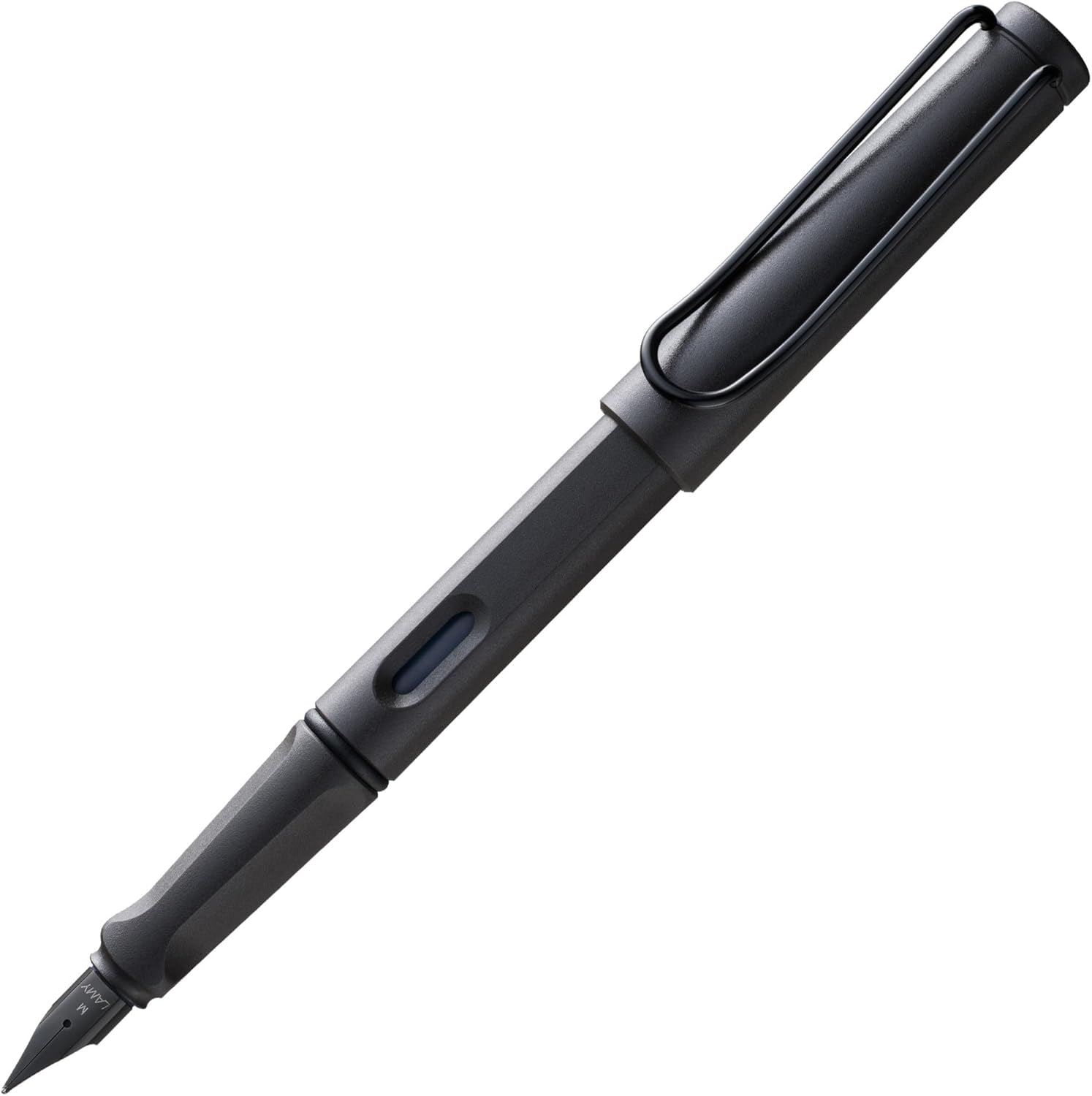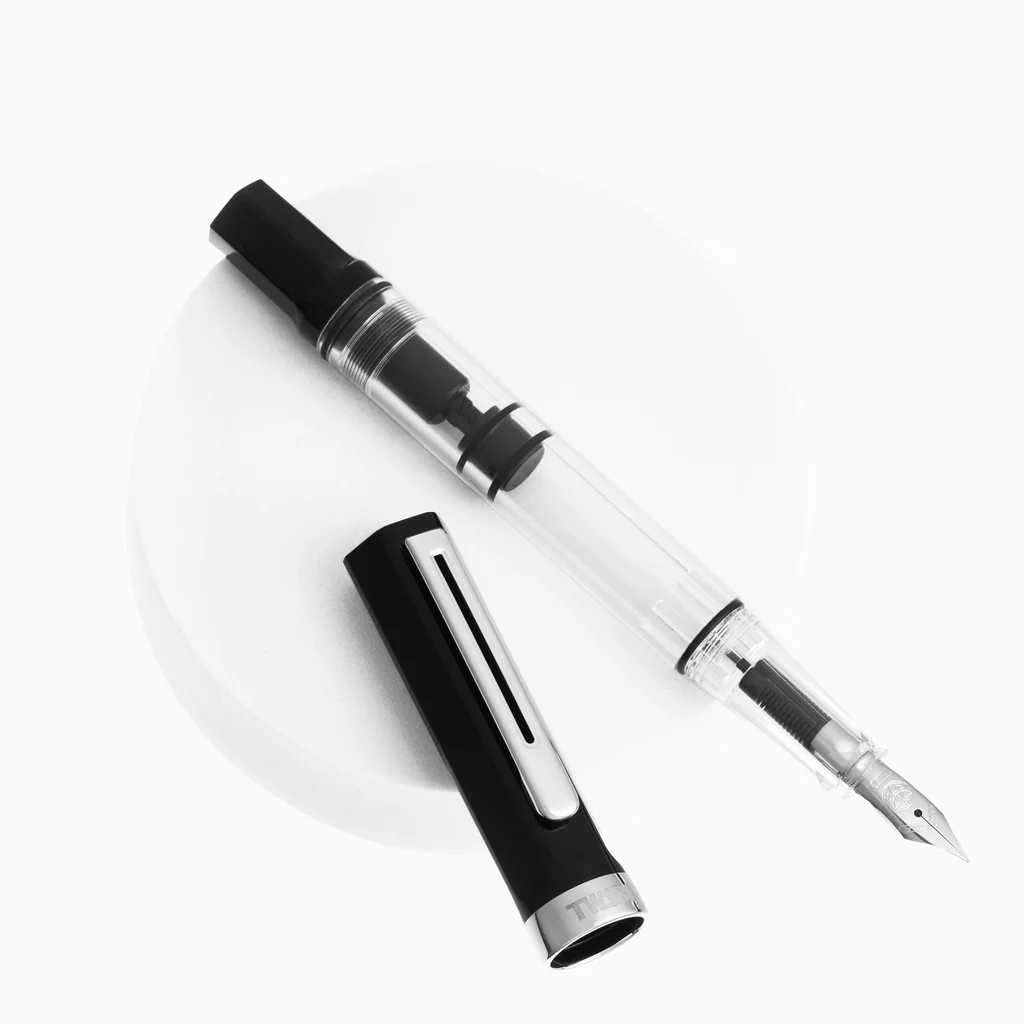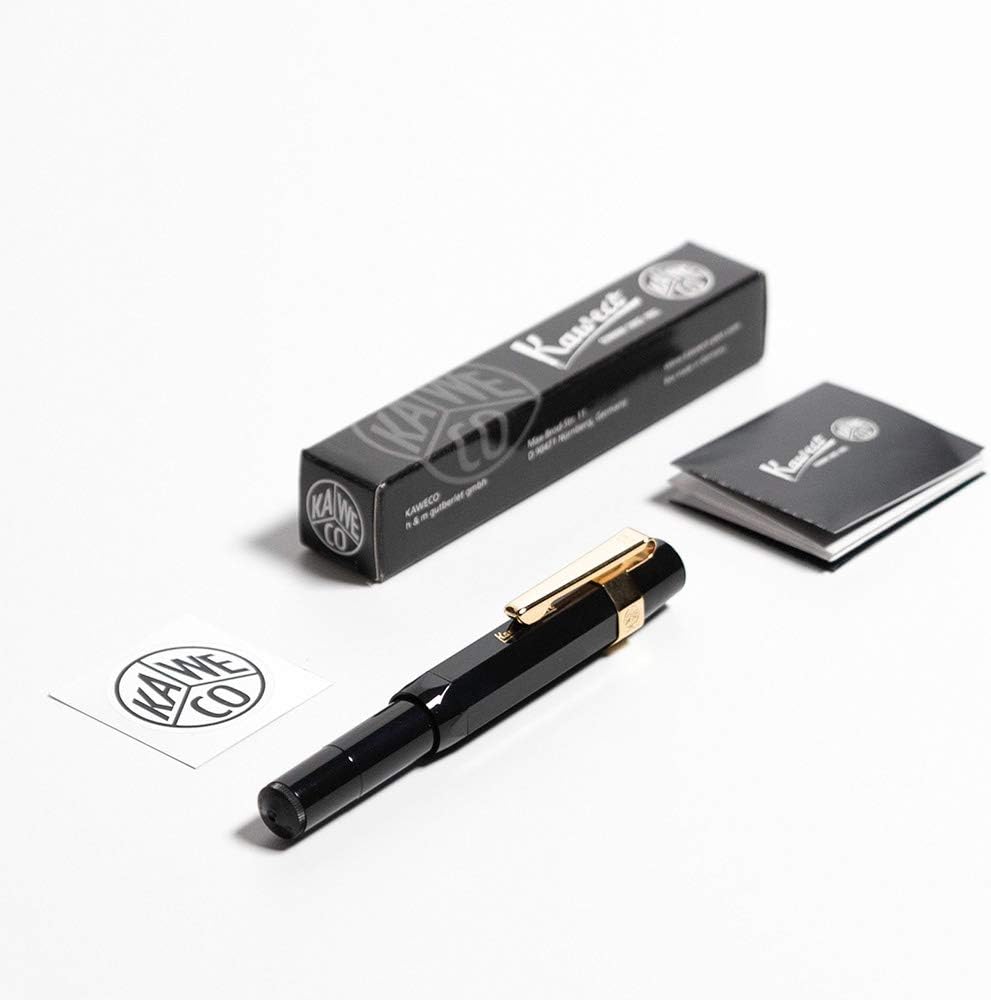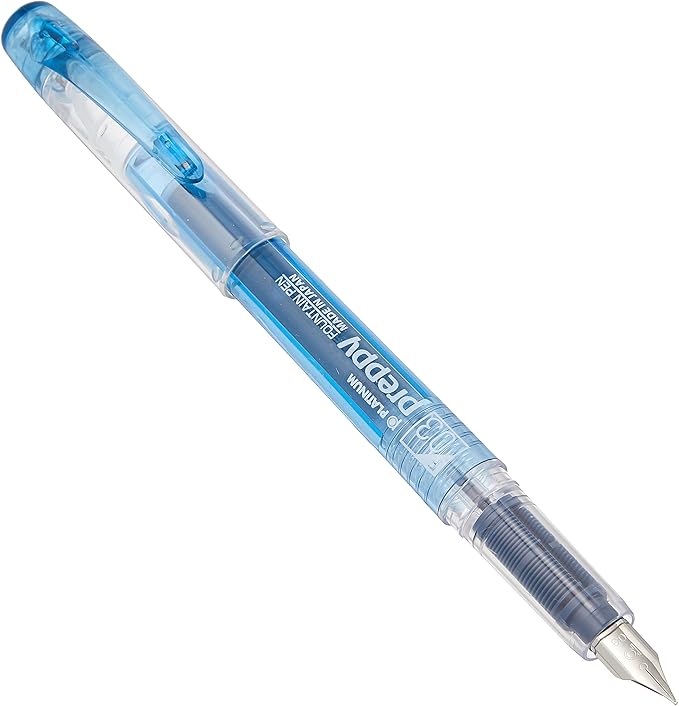Affiliate Disclosure: This post contains affiliate links. When you purchase through these links, we may earn a small commission at no additional cost to you. This helps support our testing and keeps our recommendations honest and independent.
How to Choose Your First Fountain Pen
Complete Beginner's Guide 2025
Starting your fountain pen journey? Don't worry! This guide will help you choose the perfect first fountain pen without the confusion.
🚀 Quick Start: What You Need to Know
Budget: $25-50 for your first quality pen
Nib Size: Fine or Medium (best for beginners)
Top Pick: Pilot Metropolitan ($20) - reliable and affordable
Paper: Get fountain pen-friendly notebooks
✨ Why Choose a Fountain Pen?
📝 Better Writing Experience
- • Less pressure needed - fountain pens glide smoothly
- • Reduced hand fatigue - perfect for long writing sessions
- • Natural line variation - your writing looks more expressive
💰 Economic Benefits
- • Refillable - use bottled ink instead of disposable cartridges
- • Long-lasting - quality pens last decades with proper care
- • Cost-effective - bottled ink costs much less per page
💵 Step 1: Set Your Budget
Under $25 - Entry Level
Good for:
Testing if fountain pens are right for you
Features:
Basic features, limited options
Best Choice:
Platinum Preppy ($5)
$25-50 - Sweet Spot ⭐ RECOMMENDED
Good for:
Best balance of quality and affordability
Features:
Reliable performance, good build quality
Best Choice:
Pilot Metropolitan, Lamy Safari, TWSBI ECO
$50-100 - Premium Starter
Good for:
Serious beginners ready to invest
Features:
Superior materials and craftsmanship
Best Choice:
Pilot Custom 74, Lamy 2000
Our Recommendation: Start in the $25-50 range. You get genuine fountain pen quality without major investment.
🖋 Step 2: Choose Your Nib Size
Extra Fine (EF) - 0.5mm line
Best for: Very small handwriting, cheap paper
Consider: Can feel scratchy on rough paper
Fine (F) - 0.6mm line
⭐ BEGINNER FAVORITEBest for: Most beginners, everyday writing
Consider: Versatile, works on most papers
Medium (M) - 0.8mm line
⭐ BEGINNER FAVORITEBest for: Average handwriting, smooth experience
Consider: Great for learning proper technique
Broad (B) - 1.0mm+ line
Best for: Large handwriting, artistic writing
Consider: Requires good paper, shows ink character
Start Here: Fine (F) or Medium (M) offer the best balance for new users.
🔧 Step 3: Understanding Filling Systems
📎 Cartridge System ⭐ BEGINNER RECOMMENDED
How it works: Pre-filled ink cartridges you insert into the pen
Pros:
- • Clean and convenient
- • Perfect for travel
- • No mess or complexity
Cons:
- • More expensive per refill
- • Limited ink color options
🔄 Converter System
How it works: Refillable cartridge you fill from ink bottles
Pros:
- • Access to hundreds of ink colors
- • More economical
- • Environmentally friendly
Cons:
- • Slightly more complex
- • Potential for ink spills
🔩 Piston Filler System
How it works: Built-in filling mechanism, no cartridges
Pros:
- • Large ink capacity
- • Smooth operation
- • No cartridges to buy
Cons:
- • More expensive pens
- • Harder to clean
Our Advice: Start with cartridges, upgrade to converter when ready.
🏆 Our Top 5 Beginner Recommendations
1. Pilot Metropolitan ($20) ⭐ BEST OVERALL

❤️ Why We Love It
- ✓ Exceptional build quality for the price
- ✓ Reliable performance out of the box
- ✓ Includes cartridge AND converter
- ✓ Available in multiple colors
📋 Specifications
Nib sizes: Fine, Medium
Weight: 24g (feels substantial)
Material: Brass with lacquer finish
Filling: Cartridge/converter
Perfect for: Complete beginners wanting reliability
2. Lamy Safari ($30) ⭐ BEST FOR LEARNING

❤️ Why We Love It
- ✓ Triangular grip teaches proper pen holding
- ✓ Extremely durable plastic construction
- ✓ Wide variety of fun colors
- ✓ Easy to take apart and clean
📋 Specifications
Nib sizes: EF, F, M, B
Weight: 17g (lightweight)
Material: Durable ABS plastic
Filling: Cartridge/converter
Perfect for: Students and proper technique development
3. TWSBI ECO ($32) ⭐ BEST FOR INK LOVERS

❤️ Why We Love It
- ✓ Huge ink capacity (1.5ml)
- ✓ Clear body shows ink level
- ✓ Piston filling system
- ✓ Excellent value for features
📋 Specifications
Nib sizes: EF, F, M, B, Stub
Weight: 20g
Material: Clear acrylic resin
Filling: Piston (no cartridges needed)
Perfect for: Beginners ready for bottled inks
4. Kaweco Sport ($25) ⭐ BEST PORTABLE

❤️ Why We Love It
- ✓ Compact size fits anywhere
- ✓ Classic octagonal design
- ✓ Posts to full-size pen
- ✓ Multiple material options
📋 Specifications
Nib sizes: EF, F, M, B
Weight: 13g (super light)
Material: Plastic, brass, or aluminum
Filling: Cartridge/converter
Perfect for: Everyday carry and travel
5. Platinum Preppy ($5) ⭐ BUDGET CHAMPION

❤️ Why We Love It
- ✓ Incredibly affordable entry point
- ✓ Surprisingly good performance
- ✓ Special cap prevents ink drying
- ✓ Multiple colors available
📋 Specifications
Nib sizes: Fine, Medium
Weight: 11g (very light)
Material: Plastic
Filling: Cartridge only
Perfect for: Testing fountain pens with minimal risk
⚠️ Common Beginner Mistakes (And How to Avoid Them)
❌ Mistake #1: Pressing Too Hard
Problem: Fountain pens work on capillary action
Solution: Let the ink flow naturally - barely touch the paper
❌ Mistake #2: Using Wrong Paper
Problem: Cheap paper causes feathering and bleed-through
Solution: Buy fountain pen-friendly notebooks (Rhodia, Leuchtturm)
❌ Mistake #3: Ignoring Nib Size
Problem: Assuming you need the same size as ballpoint pens
Solution: Start with Fine or Medium, test others later
❌ Mistake #4: Skipping Maintenance
Problem: Ink dries up, pen stops working
Solution: Use your pen regularly, clean every 4-6 weeks
❌ Mistake #5: Buying Too Many Pens
Problem: Getting overwhelmed with choices
Solution: Master one pen first, then expand your collection
📅 Your 4-Week Action Plan
Week 1: Purchase and Setup
- ✅ Set budget ($25-50 recommended)
- ✅ Choose nib size (Fine or Medium)
- ✅ Buy your first pen (try Pilot Metropolitan)
- ✅ Get fountain pen-friendly paper
Week 2: Practice Basics
- ✅ Practice basic letter forms
- ✅ Try different writing angles
- ✅ Note any issues (skipping, etc.)
- ✅ Adjust your grip and technique
Week 3: Explore and Learn
- ✅ Try different ink colors (if using converter)
- ✅ Learn basic cleaning techniques
- ✅ Join online communities
- ✅ Watch fountain pen tutorials
Week 4: Plan Your Next Steps
- ✅ Evaluate your first pen experience
- ✅ Consider what you like/dislike
- ✅ Research your next pen purchase
- ✅ Share your experience with others
🔧 Essential Maintenance (Keep It Simple)
Daily Care
- • Cap your pen when not using it
- • Store tip-up to prevent ink pooling
- • Use regularly so ink doesn't dry
Weekly Care
- • Check ink level and refill as needed
- • Wipe nib gently with soft cloth
- • Test write to ensure smooth flow
Monthly Care
- • Flush with water when changing inks
- • Deep clean if having flow problems
- • Check all connections are secure
❓ Quick FAQ
Q: What ink should I use?
A: Only fountain pen ink! Start with cartridges, then try bottled ink.
Q: How often should I clean my pen?
A: Every 4-6 weeks with regular use, or when changing colors.
Q: What if my pen won't write?
A: Check ink level first, then try gentle shaking (nib down).
Q: Can I use any paper?
A: Fountain pen-friendly paper works best, but copy paper is okay with Fine nibs.
Q: Should I buy online or in-store?
A: Online is fine for recommended models. Try in-store if you want to test first.
🎯 The Bottom Line
Your perfect first fountain pen checklist:
✅ Budget: $25-50
✅ Nib: Fine or Medium
✅ Brand: Pilot, Lamy, or TWSBI
✅ Paper: Fountain pen-friendly notebooks
✅ Expectation: Some learning curve is normal
Remember: The best fountain pen is the one you'll actually use. Start simple, learn the basics, then explore from there.
Ready to start? We recommend the Pilot Metropolitan with a Fine nib and some Rhodia paper. You'll be writing smoothly in no time!
Get Pilot Metropolitan on Amazon →Need more help? Check out our 6 Professional Standards or testing guide for deeper insights.